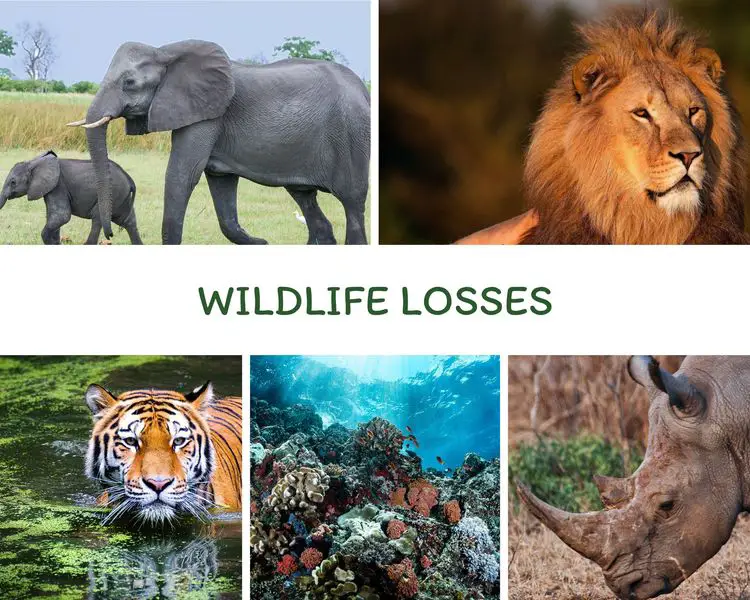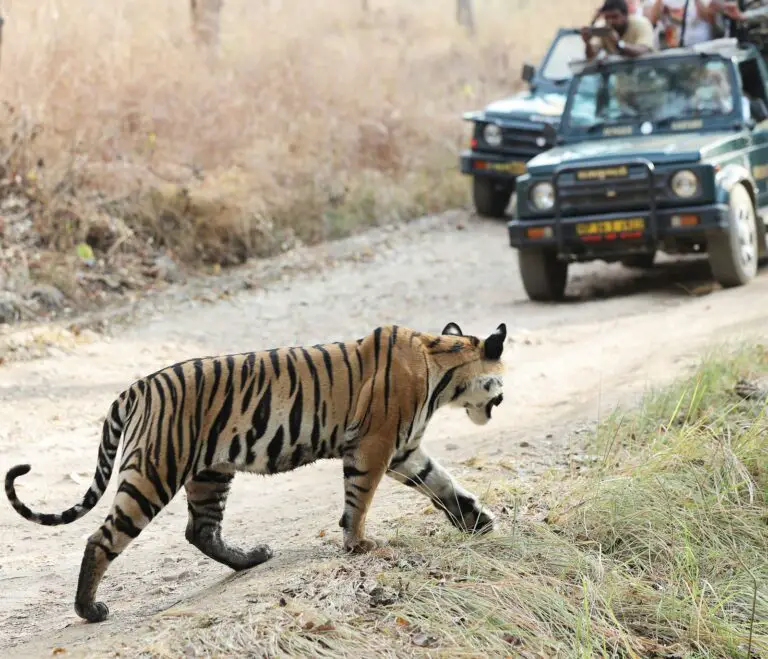Wildlife conservation is the intentional act of safeguarding wild species—animals, plants, and fungi—and their habitats, to preserve biodiversity and maintain the natural systems that support life. It spans everything from protecting rainforests and wetlands to regulating wildlife trade.
People are becoming increasingly more aware of the importance of protecting the wilderness and ecosystems. Businesses are developing new strategies to preserve nature.
The drivers are not always compassion for animals, plants, and the planet; there may be economic reasons, reputational concerns, or simply the selfish urge of the human species to survive.
Regardless of the drivers, awareness of the importance of nature is crucial for helping the wilderness and biodiversity.
Since 1970, global wildlife populations have declined by approximately 73%, primarily due to habitat destruction, overexploitation, and climate change. This decline doesn’t just threaten animals and ecosystems—it jeopardizes ecosystems that help with clean water, food production, carbon storage, medical discoveries, and cultural well-being.
Main Takeaways
- Wildlife conservation protects species and ecosystems to preserve biodiversity and the life-supporting natural systems that sustain them.
- Human activities—such as habitat destruction, climate change, and poaching—are the primary threats to wildlife.
- Biodiversity ensures ecosystem stability, supports food, water, and medicine, and helps combat climate change.
- Conservation efforts encompass habitat protection, anti-poaching initiatives, legal frameworks, and species rehabilitation.
- Everyone has a role to play; awareness, responsible choices, and political action are key to achieving long-term success.

What Is Wildlife Conservation?
Wildlife conservation is the scientific practice of protecting wild species—plants, animals, fungi—and their natural habitats. It aims to preserve biodiversity and maintain healthy, functioning ecosystems through restoration, protection, and sustainable management. Core goals include preventing species extinction, safeguarding genetic diversity, and maintaining essential ecological processes such as pollination, nutrient cycling, and climate regulation.
Types of Wildlife Conservation
In‑situ (On‑Site) Conservation
This system conserves species within their natural environments—forests, wetlands, oceans—by designating protected areas such as national parks, wildlife sanctuaries, and biosphere reserves. It maintains the natural ecosystem functions and evolutionary processes that species depend on.
According to the Convention on Biological Diversity, in situ is the primary strategy, ensuring species can self‑sustain and evolve in their native context. In-situ conservation preserves whole ecosystems, ensuring species evolve naturally and interact across the ecological web.
Ex‑situ (Off‑Site) Conservation
This system involves safeguarding species outside their natural habitats through the use of zoos, botanical gardens, seed banks, gene banks, or cryogenic storage. Its key goals are preventing extinction and preserving genetic diversity, especially when natural habitats are degraded or inaccessible.
Ex-situ strategies support research and education, and sometimes serve as a last-resort “backup” for species under dire threat. Ex‑situ safeguards species when natural habitats fail, enabling scientific study, conservation awareness, and prevention of extinction.
Why Is Wildlife Conservation Important?
Overpopulation and the general impact of humans on nature are detrimental. Conservation aims to overcome and counteract the negative impact of human activities.
When we discuss wildlife, we typically refer to the fauna of a specific ecosystem. However, in reality, we should also include the flora, insects, and all the other organisms that shape a particular habitat.
There are many reasons why the diversity of the fauna and flora is endangered. Loss of habitat, a decline in population numbers, and a decline in genetic traits are severe threats to many species.
Climate change and global warming are the main drivers of ecosystem fragmentation and degradation.
In extensive terms, any stress to habitat, wildlife species, insects, plants, and microorganisms can have serious consequences.
Unregulated hunting and poaching activities, deforestation for timber and food production, agricultural practices, pesticide use, overfishing, overgrazing, and pollution generated by tourism and transportation can be detrimental to animals, plants, and microorganisms.
Wildlife is often utilized for food, medicine, clothing, and other essential needs.
Biodiversity Preservation
A diverse ecosystem functions like a safety net: if one species declines, others fill in to maintain stability. Studies show that ecosystems rich in species recover better from disturbances, such as drought or pest outbreaks, whereas monocultures are far more vulnerable.
Life operates via networks: pollinators support plants, predators control herbivores, and decomposers recycle nutrients. Each species fills a unique role, and losing one can disrupt the entire system—consider the example of sea otters and kelp forests, where removing otters leads to kelp die-offs.
Preventing species loss helps avert “coextinctions,” where the loss of one species triggers further losses of other species. Research confirms that fewer species result in less efficient resource use, biomass production, and nutrient cycling

Is Extinction Always Wrong?
Over the centuries, many species have gone extinct. Many have been wiped out by natural events and natural species selection.
However, extinction and loss of biodiversity are constant concerns that need to be addressed, especially when these events are correlated with human activities. That is the real goal of conservation and the honest endeavor of conservation biologists.
Environmental Balance
Certain species—like wolves in Yellowstone or starfish in tidal pools—dramatically shape their habitats. These species are known as “keystone species” and play a crucial role in maintaining ecosystem structure; removing them can trigger dramatic ecosystem collapses.
Maintaining intact ecosystems and protecting keystone species provides critical services, such as pollination, which is vital for 75% of food crops. Additionally, water purification is a key function, as wetlands act as natural filters, providing 75% of global freshwater. Ecosystems are essential for carbon sequestration; forests store approximately 2.6 billion tonnes of CO₂ annually, while mangroves are even more efficient per area.

Benefits For Humans – The Value of Nature and Protecting the Natural World
To understand the importance of wildlife conservation, it is essential to recognize the crucial role that nature, natural resources, and biodiversity play.
Agriculture and fishing rely heavily on natural resources. Many natural environments are essential to the economies of many countries, contributing significantly to tourism. Nature has enabled scientists to find medical treatments and energy sources. Nature helps to produce clean water. These are all examples of how nature is sustaining our economy and welfare.
It may sound incredibly selfish, but if we want to change our behavior toward nature, we need to create awareness about the potential consequences for the human population of the loss of diversity and species.
Nature is the cornerstone of our lives, and we must manage it properly.
Economic Value
Ecotourism, exemplified by activities such as African safaris, makes a substantial contribution to global economies, generating billions of dollars annually.
Sustainable food harvesting practices also play a crucial role in maintaining the stability of ecosystems, ensuring a reliable food supply for communities over time.
Medicinal Discoveries
It is estimated that around 50% of modern medicines are derived from natural sources. Medications such as aspirin, antibiotics, and cancer treatments have highlighted over time the importance of biodiversity, which holds the potential for discovering future cures that remain unknown.
Cultural & Spiritual Significance
Wildlife significantly enriches human culture, with animals prominently featured in various spiritual beliefs, rituals, myths, art, and traditions. For many Indigenous communities, different species are essential to their identity and cultural heritage.
Combatting Climate Change
Forests, peatlands, and wetlands serve as giant carbon storage systems—preserving them prevents the release of CO₂. Natural ecosystems could provide ~30% of initial emissions reductions by 2030.
Biodiversity enhances resilience to climate extremes—diverse forests are more resilient to droughts than uniform plantations, and wetlands provide better flood buffering.

Examples of losses
How Many Elephants Are Killed Every Year?
Elephant poaching is the infamous practice of killing elephants to remove and sell ivory. It has been a pressing problem for many years and, according to scientists, reached its peak in 2011.
There have been studies showing that the total number of elephants poached has decreased in recent years, but there is still much more to be done if we want to avoid wiping out elephants from Africa’s natural environment.
Today, over 30000 elephants are killed each year. That means 100 per day. When you have finished reading this article, 1 or 2 elephants have probably been killed.
The total population of African Elephants is today estimated to be 400000.
Lion Population Down 40% in the Last 20 Years
It is well known that the lion population worldwide is in decline. Although challenging to estimate, there are 20000 lions in Africa. In India, the lion population is counted at only 523.
Only 3900 Tigers Are Left in The Wild.
Tigers are one of the most endangered wild animals in the world. It is estimated that only 3900 tigers are left, not in captivity. Tigers could be extinct in our lifetime if we do not help their conservation.
Rhinos Are Poached for Their Ivory.
Currently, there are estimated to be only 27,000 remaining rhinos alive. There are two species of rhino found in Africa and three in Asia.
The three common Asian rhinos are the greater one-horned rhino found in India and Nepal; the Sumatran rhino found on the island of Sumatra and Borneo; and the Javan rhino found on the island of Java, Indonesia. In Africa, we have black rhinos and white rhinos.
In 2010, the western black rhino was declared extinct, once again due to poaching for its horn. The northern white rhinos. Only two remain, and both are female.
Coral Reefs
There are approximately 2,000 species of coral reefs, which are located in the tropics and subtropics of the world. More than 200 species are considered endangered. Bleaching, caused by global warming, overfishing, pollution, and ocean acidification, is the primary threat to their existence.
Conservation Actions
The Chernobyl exclusion zone is an example of how nature responds when humans do not interfere with the ecosystem. Although the radioactivity level remains high, and radiation has killed many animals and plants, nature is gradually establishing a sustainable equilibrium after over 30 years.
The Exclusion Zone spans approximately 2,800 square kilometers, making it one of the most radioactively contaminated locations in the world. Following the 1989 Chernobyl nuclear disaster, over 350 acres of pine forests suffered significant damage; everything in the area was contaminated, including the groundwater. After 35 years, the site has since been repopulated with animals, including birds and mammals, as well as plants.
There are several conservation programs and wildlife rehabilitation centers.
Habitat Protection
One of the most essential actions is preserving the ecosystems where species live. This includes creating protected areas, restoring degraded lands through reforestation or wetland recovery, and maintaining habitat connectivity such as wildlife corridors. These efforts sustain ecosystem services and help prevent declines in species populations.
Anti‑Poaching Efforts
Poaching and illegal wildlife trade are devastating threats. Conservation groups support patrols, utilize wildlife monitoring technologies such as camera traps and GPS, and engage communities to reduce poaching. Such efforts are vital for protecting threatened species.
Legal Protection of Species
Laws and international treaties, such as CITES and the Convention on Biological Diversity, regulate hunting and trade, allocate funding, and designate conservation zones. These legal frameworks reinforce practical habitat and species protection.
Captive Breeding & Reintroduction Programs
For critically endangered species, breeding in controlled environments is often essential. Captive breeding enhances population numbers and genetic health. Successful examples include breeding programs for California condors, giant pandas, and water voles—many of which have been reintroduced to the wild with supportive habitat protections.
However, animals often require behavioral training—such as predator avoidance and foraging skills—before release.

The International Gorilla Conservation Programme
The International Gorilla Conservation Programme was set up in 1991 to ensure that the critically endangered mountain gorillas are conserved in their habitat in the mountain forests of the Virunga Massif in Rwanda, Uganda, and the DRC.
The International Gorilla Conservation Programme sprang from The Activities of Dian Fossey, who spent several years studying Rwandan mountain gorillas. The IGCP’s objectives are to expand the Rwandan government’s support for conservation efforts in the local community.
Wildlife rehabilitators play a vital role in helping injured, orphaned, or displaced wild animals recover and return to their natural habitat.
However, there is still much more to be done to ensure that animals released into the wild from these centers have a high chance of survival.
Unfortunately, some studies suggest that the survival rate of rehabilitated predatory animals in their natural habitats is relatively low. Only about one-third of them survive. We must help conservationists identify the most effective rehabilitation techniques to ensure a higher survival rate when animals are released into the wild.
One of the best examples of rehabilitation is the story of the Peregrine falcon. Peregrine falcon chicks are born in captivity. They are fed with a hand puppet mimicking the head of a peregrine, so they cannot imprint on the human. When they are strong enough to fly, they are released from their cage and kept in captivity. They then learn to hunt. Only after this training are they released into the wild.
Sumatra tiger conservation is another example of a conservation strategy. Working closely with the government, they aim to protect tiger habitats, reduce human-tiger conflicts, avoid hunting, and improve scientific knowledge.
What Can We Do to Help Preserve Biodiversity?
We need to create, all together as a society, a Positive approach. Wildlife is a collective effort of conservationists, technologists, engineers, data scientists, influencers, soldiers, and other professionals.
Avoid contributing to climate change, wildlife trafficking, and habitat loss. Civil society must be aware of companies and activities that jeopardize the survival of habitats and species. If we can create this awareness, we can redirect our money and investment towards more conscious companies and activities. Another critical pillar of this attitude change is real political will. Without the correct decisions from politicians, it
It won’t be easy to create awareness and effect a fundamental shift in action.
Conclusion
Wildlife conservation is not just about saving animals—it’s about preserving the very systems that sustain all life, including our own. As biodiversity dwindles and habitats are destroyed, the balance of our ecosystems weakens, putting at risk essential resources such as clean air, water, food, medicine, and even climate stability. The examples of endangered species, ranging from elephants to coral reefs, illustrate the urgency of the crisis.
Whether driven by ethics, survival instincts, or economic interests, the growing awareness of conservation’s importance is a positive sign. But awareness alone is not enough. We must translate knowledge into action through policy, community engagement, responsible consumption, and global cooperation. From protecting habitats to supporting rehabilitation programs and enforcing anti-poaching laws, every effort matters.
Wildlife conservation is a collective responsibility. It demands the collaboration of scientists, governments, businesses, and individuals alike. Our future is inextricably linked to the future of nature. To preserve biodiversity is to protect the foundation of life on Earth—and ensure that future generations inherit a planet rich in wonder, resilience, and possibility.



